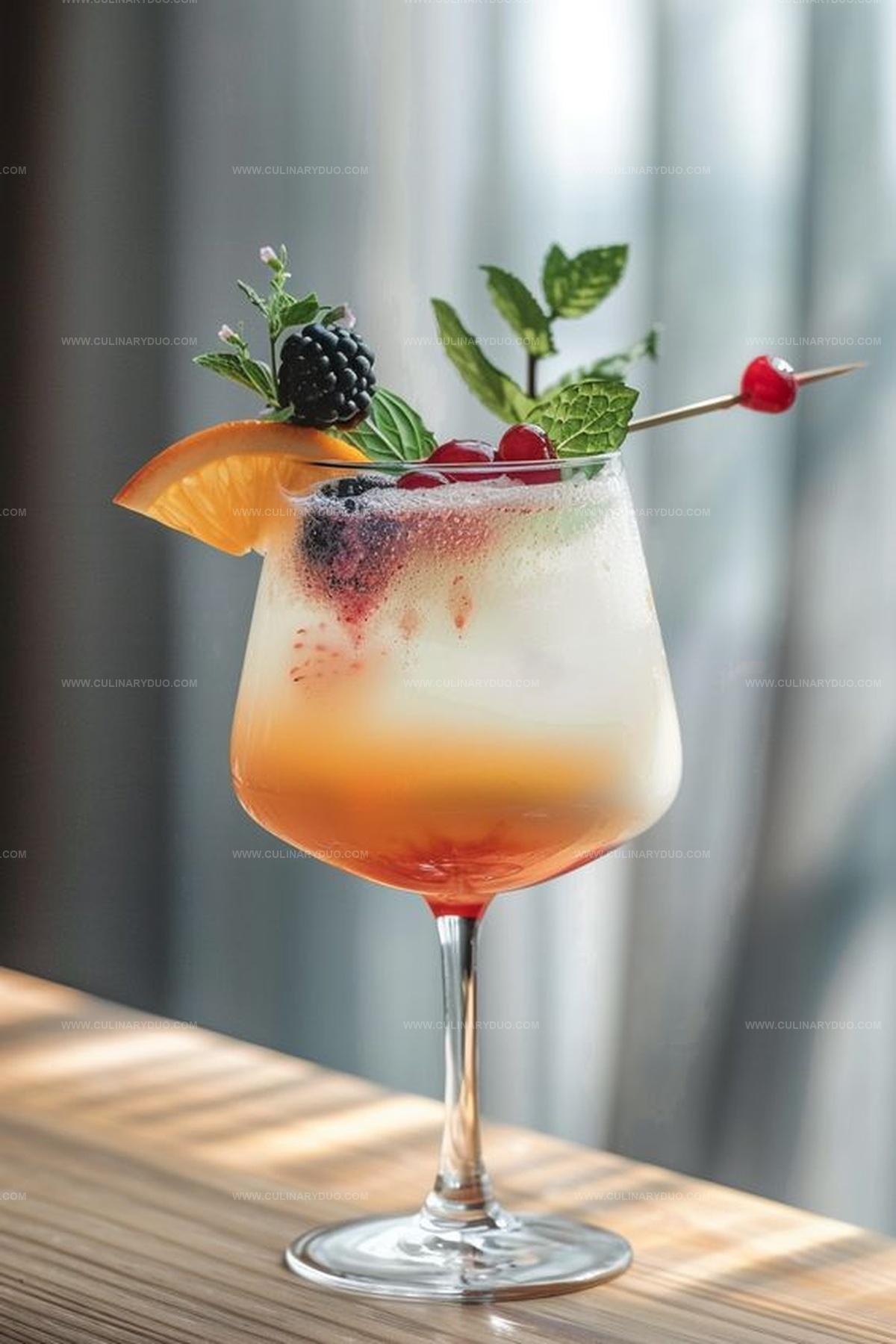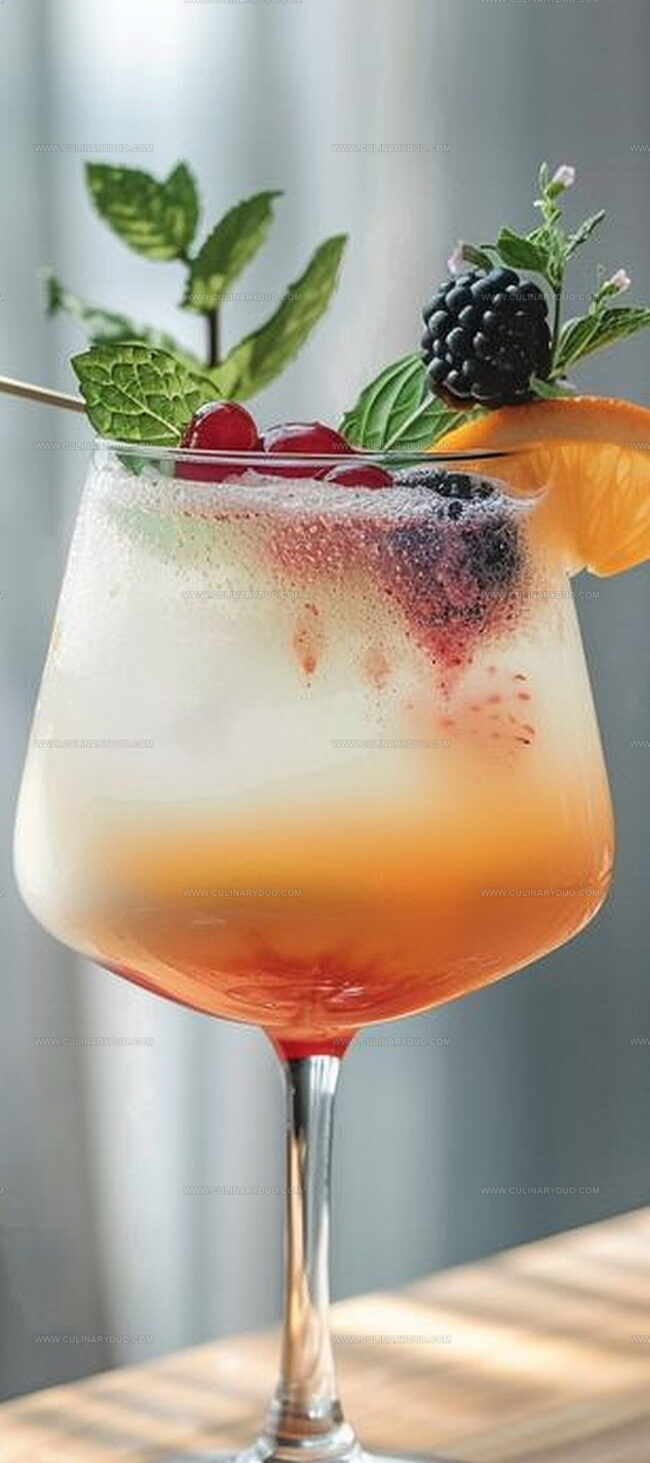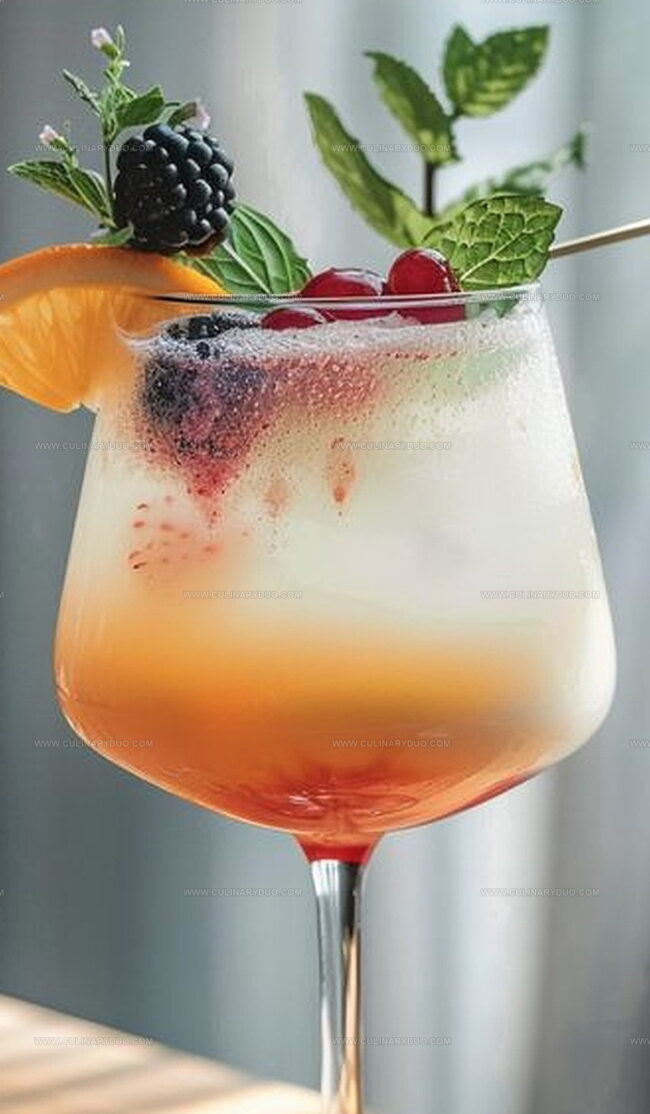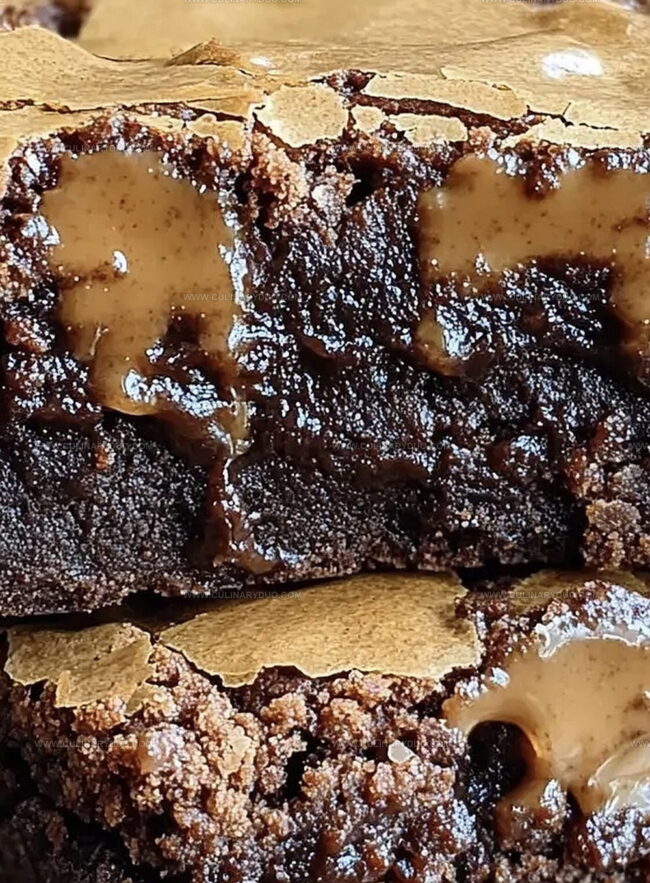Refreshing Sake Sangria Recipe: A Lively Twist on Classic Sips
On sultry summer evenings, nothing beats a refreshing sake sangria that blends Japanese and Spanish flavors into one irresistible cocktail.
This vibrant drink combines crisp sake with sweet seasonal fruits and a hint of citrus.
Chilled and beautifully garnished, the sangria offers a delightful twist on traditional sangria recipes.
Each sip brings a complex harmony of fruity and subtle sake notes that dance across your palate.
The light, elegant beverage works perfectly for backyard gatherings or relaxed weekend celebrations.
Sake Sangria: Why You’ll Want A Sip
Sake Sangria Ingredient Essentials
Base Spirits:Fresh Fruits:Sweeteners and Mixers:Sake Sangria – How To Make It Happen
Step 1: Slice Fresh Fruits
Grab your favorite seasonal fruits like oranges, lemons, strawberries, or peaches.
Using a sharp knife, cut them into delicate thin rounds or playful wedges that will look gorgeous floating in your drink.
Step 2: Create Fruity Base
In a spacious pitcher, toss the sliced fruits together with:Mix these ingredients gently to start building your flavor foundation.
Step 3: Add Sake Magic
Pour the smooth sake directly over the fruit mixture.
Use a long spoon to softly stir everything together, ensuring the fruits and liquids are beautifully combined.
Step 4: Chill and Infuse
Slide the pitcher into the refrigerator and let the sangria rest for a minimum of 2 hours.
Overnight chilling works even better, allowing the fruits to release their sweet juices and create a more complex taste profile.
Step 5: Bring Bubbles to Life
Right before serving, splash in some soda water or ginger ale.
This adds a delightful fizzy texture that makes the sangria dance with lightness.
Step 6: Serve with Style
Fill wine glasses or tumblers with ice.
Pour the chilled sangria over the ice, making sure each glass gets a beautiful mix of fruit and liquid.
Step 7: Customize Your Creation
For a drier version, reduce the simple syrup amount.
Switch up fruits based on what’s in season.
A fresh mint sprig makes an elegant final touch.
Sangria Tips For Sip-Worthy Results
Fresh Variations On Sake Sangria
Sake Sangria: Chic Ways To Serve
Fruity Garnish Paradise: Sprinkle fresh mint leaves or edible flowers on top for a gorgeous visual and aromatic enhancement.
Summer Party Centerpiece: Create a stunning sangria bar where guests customize their drinks with extra fruit slices, herbs, and sparkling additions.
Seasonal Fruit Twist: Switch fruits based on what’s ripe and local – try peaches in summer, apples in fall, or citrus during winter for vibrant flavor variations.
Elegant Presentation Hack: Freeze some fruit slices as edible ice cubes to keep the drink chilled without diluting the delicious sake sangria blend.
Sake Sangria: Keeping It Fresh Longer
FAQs
Sake brings a unique, subtle rice wine flavor that’s lighter and smoother than traditional wine, creating a delicate and refreshing sangria experience.
Choose a junmai or honjozo sake, which are more affordable and have a clean taste that blends well with fruits without overpowering the other ingredients.
After 2-4 hours of chilling, the fruits will release their juices and flavors, creating a harmonious blend that’s best enjoyed cold with a bit of soda water added just before serving.
Print
Sake Sangria Recipe
- Total Time: 2 hours 15 minutes
- Yield: 6 1x
Description
Sake Sangria brings Japanese elegance to Spanish tradition, blending crisp rice wine with sweet fruits and gentle spices. Refreshing summer sips flow with cultural harmony, inviting you to savor a unique crossroads of international flavors.
Ingredients
Base Alcohol:
- 1 bottle (750 milliliters / 25.4 fluid ounces) Junmai or Ginjo sake
Liqueurs and Sweeteners:
- 1/2 cup simple syrup
- 1/2 cup orange liqueur
Fruits and Mixers:
- 2 cups assorted fresh fruit (oranges, lemons, limes, and berries)
- 1 cup soda water or ginger ale
- Ice cubes for serving
Instructions
- Carefully slice oranges, lemons, limes, and any additional seasonal fruits into delicate, translucent rounds or artful wedges.
- Transfer the sliced fruits into a spacious glass pitcher, ensuring even distribution across the vessel.
- Drizzle simple syrup and orange liqueur over the fruit, creating a glossy, aromatic base that will infuse the sangria with sweet complexity.
- Gently cascade the sake over the fruit mixture, using a long-handled spoon to incorporate the ingredients without bruising the delicate fruit.
- Seal the pitcher and allow the sangria to rest in the refrigerator for a minimum of 2 hours, preferably overnight, enabling the flavors to harmonize and intensify.
- Immediately before presentation, introduce chilled soda water or ginger ale to the mixture, creating a light, effervescent texture.
- Fill wine glasses or tumblers with ice, carefully pour the infused sangria, ensuring an equal distribution of fruit and liquid.
- For a more refined, less sweet profile, reduce the simple syrup quantity. Experiment with seasonal fruit variations to capture the essence of the moment, and optionally crown with a fresh mint sprig for an elegant finishing touch.
Notes
- Choose ripe, seasonal fruits for the most vibrant and natural sweetness in your sangria.
- Slice fruits uniformly to ensure even flavor infusion and an attractive presentation.
- Chill the sake and pitcher beforehand to keep the sangria refreshingly cool without diluting it with too much ice.
- Try different sake styles like junmai or nigori for unique flavor profiles that complement the fruits.
- Prep Time: 15 minutes
- Cook Time: 2 hours
- Category: Cocktails
- Method: Blending
- Cuisine: Japanese-Spanish
Nutrition
- Serving Size: 6
- Calories: 144
- Sugar: 15 g
- Sodium: 5 mg
- Fat: 0 g
- Saturated Fat: 0 g
- Unsaturated Fat: 0 g
- Trans Fat: 0 g
- Carbohydrates: 17 g
- Fiber: 1 g
- Protein: 0.2 g
- Cholesterol: 0 mg





Natalie Brooks
Co-Founder & Content Strategist
Expertise
Education
eCornell
Natalie brings the vibrant, plant-powered side to Culinary Duo. After earning her Plant-Based Nutrition Certificate from eCornell, she combined her love for fresh ingredients with a passion for storytelling, aiming to make healthy cooking simple and satisfying.
Her kitchen motto: good food doesn’t need a fancy label, it just needs fresh ideas and a little creativity. Outside of writing and recipe testing, Natalie’s happiest in her garden, exploring farmers’ markets, or mixing global flavors into new kitchen experiments.